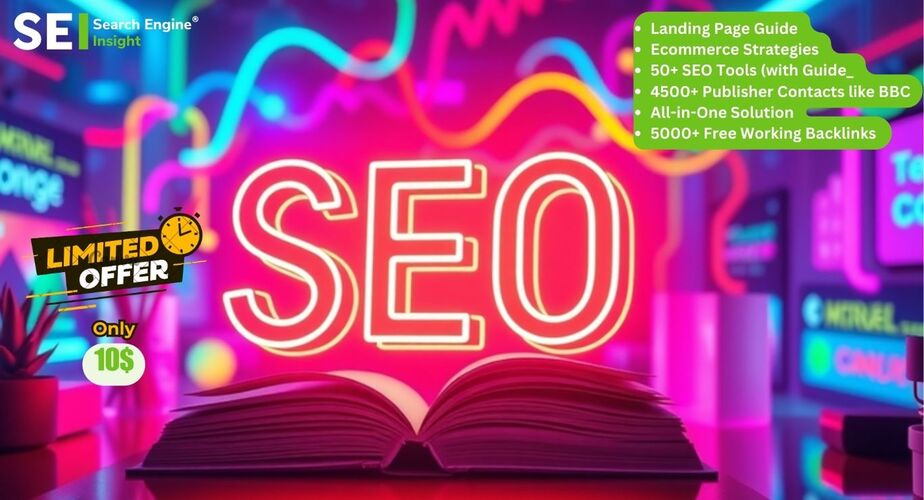Creating an Email Style Guide: Why Consistency Drives Higher Engagement
Consistency is one of the key components of effective email marketing, yet very few companies have an email style guide that promotes consistency. An email style guide promotes a consistent approach to email campaigns so that your subscribers will recognize, rely upon and engage with your brand repeatedly. When expectations are established and standards are set from subject lines to content, tone, design and formatting, marketers not only increase the efficacy of their emails, but they foster positive relationships with their subscribers to maintain engagement over time.
Why Every Brand Needs an Email Style Guide
An email style guide is essential for any brand aiming for sustained marketing success. Without consistent guidelines, messages become fragmented, causing confusion and diminishing subscriber trust. A style guide ensures all email communications adhere to unified standards, reinforcing brand identity, improving readability, and creating familiarity among subscribers. Neglecting proper formatting or authentication can trigger issues like SMTP error 554.571, which prevents emails from being delivered and undermines even the best-crafted campaigns. Consistency in email presentation fosters stronger emotional connections, leading to higher open rates, greater subscriber loyalty, and improved marketing outcomes.
Enhancing Brand Recognition Through Consistent Design
Visual consistency plays a pivotal role in building strong brand recognition through email marketing. Subscribers quickly identify brands that regularly use familiar colors, logos, typography, and imagery. An email style guide clearly specifies visual elements, such as color palettes, font styles, image usage, and layout principles. By adhering consistently to these visual guidelines, marketers reinforce brand identity, increase recognition, and significantly boost subscriber trust and engagement levels.
Develop a Cohesive and Consistent Tone of Voice
Tone is one of the largest factors that influences subscriber expectations and sentiments. With an established email style guide, for example, a brand can determine its voice formal vs. conversational vs. educational vs. jokey and then talk to its subscribers in that tone forevermore in subsequent messaging. When emails are consistent in voice, they educate about familiarity of the brand, allow the brand to have humanistic qualities and relate to the reader, and help assess whether the brand is reliable. When people receive the same voice over and over again, they’re more likely to comply, listen, participate and do as they’re told.
Optimizing Subscriber Experience with Structured Content Standards
Clearly defined content standards outlined in an email style guide improve readability, clarity, and overall subscriber experience. Guidelines on email length, use of headings and subheadings, paragraph structure, and call-to-action formatting ensure messages remain clear and easy to navigate. Structured content standards enhance subscriber comprehension, reduce cognitive load, and make emails more enjoyable and engaging. Well-organized content consistently drives higher subscriber interaction and satisfaction.
Boosting Engagement Through Predictable Formatting
Subscribers appreciate predictable formatting, which enables quick comprehension and navigation of emails. A comprehensive style guide details consistent formatting rules, including how to structure headings, bullet lists, buttons, hyperlinks, and spacing. Maintaining predictable formatting reduces visual confusion and enhances the user experience. Subscribers accustomed to consistent layouts are more likely to engage actively, increasing click-through rates and conversion outcomes.
Workflows for Creating Emails are Simplified with a Style Guide
A style guide for emails simplifies internal workflows and facilitates content creation. When expectations are set, there is less room for error, meaning that marketers, designers, and writers can more effectively produce cohesive emails that adhere to brand specifications. Increased productivity is an added benefit when operations run smoothly, and team members work together with increased efficiency and quicker response times. By offering access to all the required information to achieve success, teams needn’t worry about making mistakes that could jeopardize the brand or the customer experience and can instead focus on creating consistently successful campaigns.
Strengthening Subscriber Trust and Credibility
The more consistent you are about reaching out to your list through email, the more confident your subscribers will feel and the higher level you establish a credible brand. Consistent emails make your subscribers think you are professional, trustworthy and reputable. A guide to the brand maintains consistency across tone, visuals and structure, reinforcing subscribers’ trust in the brand. With ongoing trust, subscribers are more open to promotional content, more inclined to engage and more disposed to long-term relationships, leading to more effective marketing and loyal subscribers.
Avoiding Common Pitfalls with a Defined Email Style Guide
Without the clear construct, marketers are subject to potentially confusing discrepancies that are a disservice to the subscriber experience. Too often, mismatched visuals, varying tone, unclear message or wonky formatting can hurt subscriber perception and engagement. You won’t even have to think about mistakes like these, thanks to an email style guide that will keep your campaign looking polished and professional no matter what. Prevention of these traps leads to greater subscriber happiness, online brand longevity and increasing marketing efficiencies.
Accessibility Standards in Your Email Style Guide Are Important
More recently, accessibility is crucial for email marketing campaigns, and adding accessibility standards to your style guide ensures it’s a standardized process for inclusive subscribers. With expectations set on color contrast and specific colors used, alt-text, and description of images, font and size and layout, you know that your emails will always be usable for those with visual impairments or disabilities. In addition, this shows current and potential subscribers that you care about their experience and when you do, open rates increase as satisfaction grows, social shares are more likely to get spread further due to larger reach, and brand perception increases exponentially as inclusive marketing efforts go far.
Using Analytics to Inform Your Email Style Guide
Regularly analyzing email performance metrics such as open rates, click-through rates, engagement data, and subscriber feedback helps marketers continually refine their email style guidelines. Data-driven insights reveal which elements resonate most effectively with subscribers, allowing strategic adjustments and continuous improvement. Leveraging analytics ensures your style guide remains relevant, effective, and aligned with evolving subscriber expectations, consistently improving overall email performance and engagement.
Updating Your Email Style Guide Regularly for Continuous Improvement
An email style guide is a living document that requires regular updates to remain effective. Market trends, subscriber preferences, and brand developments constantly evolve, necessitating periodic review and refinement. Regular updates ensure the style guide accurately reflects current best practices, technology advancements, and subscriber expectations, maintaining relevance and effectiveness over time. A continuously improved style guide supports sustained subscriber engagement, loyalty, and overall email marketing success.
Consistent Team Training on the Style Guide Keeps Teams in Alignment
Without consistent team training for style guide implementation, the wheels can fall off. Regular training opportunities ensure that marketers are aware of everything and fully implement suggested standards. For example, with proper training on tone, design, accessibility, and reporting/analytics, teams can create cohesive newsletter campaigns that come across professionally and with purpose. When everyone knows the same thing and is on the same team, there’s less room for error, effective collaboration occurs, and brainstorming meetings create ongoing improvements. This all results in better newsletter campaigns and a better existence for subscribers, upholding effective marketing endeavors for the foreseeable future.
Implementing Feedback Loops for Continuous Style Guide Optimization
Creating structured feedback loops is essential for marketers seeking to continually optimize their email style guidelines based on real-world campaign performance, evolving subscriber preferences, and valuable internal team insights. By systematically gathering, analyzing, and acting upon feedback, marketers can pinpoint precisely which elements of their emails resonate most strongly with subscribers and which require further improvement or refinement. Structured feedback loops not only highlight immediate opportunities to enhance specific campaigns but also provide critical long-term insights that drive continuous improvement in email marketing strategies.
Regularly soliciting internal team input ensures marketers leverage diverse perspectives and expertise, capturing insights that might otherwise remain overlooked. Internal feedback can surface challenges in content creation, identify areas where style guidelines may lack clarity, and uncover innovative ideas for enhancing subscriber engagement. By fostering an environment where teams consistently share their experiences and suggestions, marketers can rapidly refine style guidelines, streamline processes, and maintain team alignment around shared standards, resulting in stronger, more cohesive email campaigns.
Similarly, feedback from subscribers this provides access to reactions, preferences, and satisfaction levels, instantaneously and in real time. For example, some subscriber feedback cited comes from surveys after an email or email campaign sparks specific interest and other feedback discovered through retention analytics like engagement, click rates, and unsubscribes. Using subscriber feedback and the compatibility of email retention data for actionable insight allows marketers to change stylistic elements of email which then helps with tone of voice, imagery, proper hierarchy, ADA compliance so that characteristics featured via style are always correct, beneficial and appealing.
Moreover, feedback allows for feedback to work effectively as a feedback loop, where testing and experimentation occur on a smaller scale before the larger scale change is adopted. Whether relying on subscriber feedback or internal feedback, consistent A/B testing over time helps marketers see how a change here or there in stylistic guideline creation from messaging to imagery to configuration can result in any number of ways based on how subscribers elect to engage (or not). Thus, these strong metrics and dependent upon feedback help assess which style guides should remain and which should change for maximum potential email efficacy.
Ultimately, effective and formalized feedback systems establish an ongoing learning, editing, and improving feedback loop as it pertains to email marketing endeavors. When the marketing team is receptive to internal and subscriber feedback, the email style guide evolves into a living, breathing document that showcases the most updated and ambitious approach to email marketing relative to evolving subscriber needs. This commitment to endless improvements, effectively, keeps subscribers engaged, boosts email marketing KPIs, and establishes brand authority and subscriber confidence for meaningful, effective long-term subscriber engagement.
Future Trends Influencing Email Style Guide Development
Future trends will change the evolution of email style guides, such as dynamic personalization, AI-generated recommendations and accessibility. Marketers need to adjust for future considerations as best practices for inclusion in their style guides. By using such trends before they happen, email communications are kept relevant and brand effective, satisfying the needs of subscribers with engagement for successful marketing endeavors for many years to come.
Final Thoughts: Driving Engagement with a Consistent Email Style Guide
Creating and maintaining a comprehensive email style guide represents a crucial strategic investment that significantly enhances subscriber engagement, fosters lasting brand excellence, and drives measurable marketing success. By ensuring consistency across essential email components including visual design, written content, tone of voice, formatting, and accessibility considerations brands establish clear and recognizable communication standards. This consistency cultivates trust among subscribers, making every email feel familiar, credible, and trustworthy, thereby increasing the likelihood of continued engagement and positive responses.
Consistent visual design, guided by a detailed style guide, ensures emails effectively reinforce brand recognition through familiar use of color schemes, logos, typography, and imagery. Subscribers quickly recognize emails that reflect the brand’s visual identity, reinforcing brand presence and memorability within crowded inboxes. Similarly, consistency in content structure, clarity, and formatting reduces cognitive load and helps subscribers easily navigate emails, increasing their willingness to engage and explore further.
Not only do email standards promote a unified brand image, but the establishment of a tone of voice via an email style guide keeps brands consistent and genuine across all communication channels. When a subscriber knows what type of formal, casual, witty or educational messaging they’ll receive and they receive it consistently it becomes easier to establish an emotional connection. The emotional connection renders subscribers more vulnerable, engaged and loyal over time, thereby positively impacting short- and long-term marketing campaigns.
Furthermore, seamless application of an email style guide makes subscribers happy. Predictable situations and guaranteed results keep subscribers comfortable; there’s no guessing when one knows the outcome of brand communication and this soothes intrusions as opposed to championing uncertainty about a brand’s professionalism and reliability. Improved subscriber satisfaction equals better email metrics like open rates, click-through rates and engagement.
This signifies that to foster and reinforce these aspects, marketers should consider their email style guide a living document that requires at least yearly updates from subscriber input, market shifts, technological advancements, and at-brand developments. From subscriber analytics to engagement rates, everything should be assessed for future versions to optimize the style guide even further, as it’s dictated by what the audience wants.
Thus, with a concrete style guide and yearly adjustments, marketers can ensure they always get what they need. Thus, with a style guide, marketers will maintain a consistent brand identity and brand voice while simultaneously enjoying a better experience on their end. Emails may become more effective and more convincing because of the cohesion.




